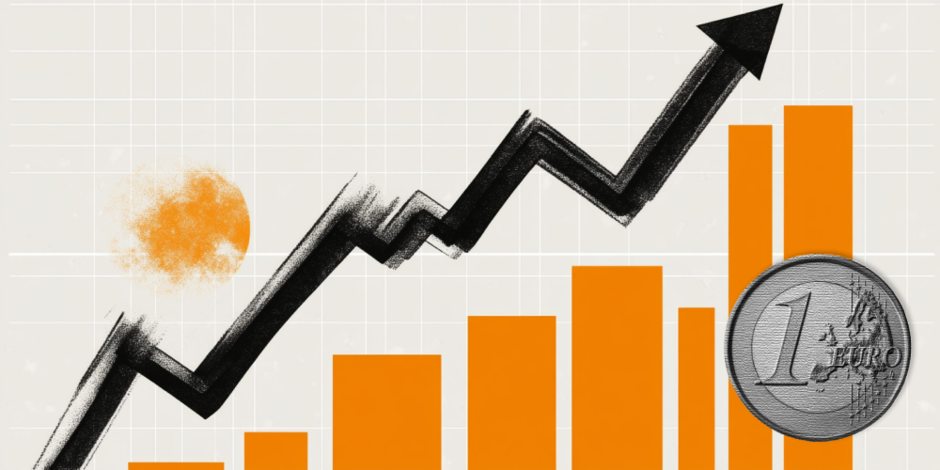EUR/JPY rallies to one-week top, further beyond 159.00 amid notable JPY weakness
- EUR/JPY prolongs its strong weekly uptrend for the third straight day on Wednesday.
- Worries that Trump’s tariffs could derail Japan’s economy weigh heavily on the JPY.
- Rising trade tensions and the ECB’s dovish stance might cap further gains for the cross.

The EUR/JPY cross builds on this week's solid recovery move from the vicinity of mid-155.00s, or the lowest level since August 2024, and gains strong follow-through positive traction for the third straight day on Wednesday. The momentum lifts spot prices to a one-week high, around the 159.30 area during the Asian session, and is sponsored by the heavily offered tone surrounding the Japanese Yen (JPY).
Concerns about the potential economic fallout from US President Donald Trump's new tariffs on commodity imports turn out to be a key factor behind the JPY's relative underperformance against major currencies. This, along with a generally positive risk, offset the Bank of Japan's (BoJ) rate-hike plans and further undermines the safe-haven JPY, which, in turn, provides an additional boost to the EUR/JPY cross.
The shared currency, on the other hand, struggles to attract any meaningful buyers in the wake of rising trade tensions. In fact, Trump's no-exemption tariffs effectively end deals with the European Union and other countries. Adding to this, German Chancellor Olaf Scholz and French Foreign Minister Jean-Noel Barrot said that the European Union (EU) will respond to Trump's latest tariffs announcement.
This, along with the European Central Bank's (ECB) dovish stance, might keep a lid on any further appreciating move for the EUR/JPY cross. This, in turn, warrants some caution before confirming that spot prices have formed a near-term bottom and placing fresh bullish bets. In the absence of any relevant market-moving economic releases, the currency pair remains at the mercy of the JPY price dynamics.
Euro FAQs
The Euro is the currency for the 19 European Union countries that belong to the Eurozone. It is the second most heavily traded currency in the world behind the US Dollar. In 2022, it accounted for 31% of all foreign exchange transactions, with an average daily turnover of over $2.2 trillion a day. EUR/USD is the most heavily traded currency pair in the world, accounting for an estimated 30% off all transactions, followed by EUR/JPY (4%), EUR/GBP (3%) and EUR/AUD (2%).
The European Central Bank (ECB) in Frankfurt, Germany, is the reserve bank for the Eurozone. The ECB sets interest rates and manages monetary policy. The ECB’s primary mandate is to maintain price stability, which means either controlling inflation or stimulating growth. Its primary tool is the raising or lowering of interest rates. Relatively high interest rates – or the expectation of higher rates – will usually benefit the Euro and vice versa. The ECB Governing Council makes monetary policy decisions at meetings held eight times a year. Decisions are made by heads of the Eurozone national banks and six permanent members, including the President of the ECB, Christine Lagarde.
Eurozone inflation data, measured by the Harmonized Index of Consumer Prices (HICP), is an important econometric for the Euro. If inflation rises more than expected, especially if above the ECB’s 2% target, it obliges the ECB to raise interest rates to bring it back under control. Relatively high interest rates compared to its counterparts will usually benefit the Euro, as it makes the region more attractive as a place for global investors to park their money.
Data releases gauge the health of the economy and can impact on the Euro. Indicators such as GDP, Manufacturing and Services PMIs, employment, and consumer sentiment surveys can all influence the direction of the single currency. A strong economy is good for the Euro. Not only does it attract more foreign investment but it may encourage the ECB to put up interest rates, which will directly strengthen the Euro. Otherwise, if economic data is weak, the Euro is likely to fall. Economic data for the four largest economies in the euro area (Germany, France, Italy and Spain) are especially significant, as they account for 75% of the Eurozone’s economy.
Another significant data release for the Euro is the Trade Balance. This indicator measures the difference between what a country earns from its exports and what it spends on imports over a given period. If a country produces highly sought after exports then its currency will gain in value purely from the extra demand created from foreign buyers seeking to purchase these goods. Therefore, a positive net Trade Balance strengthens a currency and vice versa for a negative balance.
Tariffs FAQs
Tariffs are customs duties levied on certain merchandise imports or a category of products. Tariffs are designed to help local producers and manufacturers be more competitive in the market by providing a price advantage over similar goods that can be imported. Tariffs are widely used as tools of protectionism, along with trade barriers and import quotas.
Although tariffs and taxes both generate government revenue to fund public goods and services, they have several distinctions. Tariffs are prepaid at the port of entry, while taxes are paid at the time of purchase. Taxes are imposed on individual taxpayers and businesses, while tariffs are paid by importers.
There are two schools of thought among economists regarding the usage of tariffs. While some argue that tariffs are necessary to protect domestic industries and address trade imbalances, others see them as a harmful tool that could potentially drive prices higher over the long term and lead to a damaging trade war by encouraging tit-for-tat tariffs.
During the run-up to the presidential election in November 2024, Donald Trump made it clear that he intends to use tariffs to support the US economy and American producers. In 2024, Mexico, China and Canada accounted for 42% of total US imports. In this period, Mexico stood out as the top exporter with $466.6 billion, according to the US Census Bureau. Hence, Trump wants to focus on these three nations when imposing tariffs. He also plans to use the revenue generated through tariffs to lower personal income taxes.
Author

Haresh Menghani
FXStreet
Haresh Menghani is a detail-oriented professional with 10+ years of extensive experience in analysing the global financial markets.

















